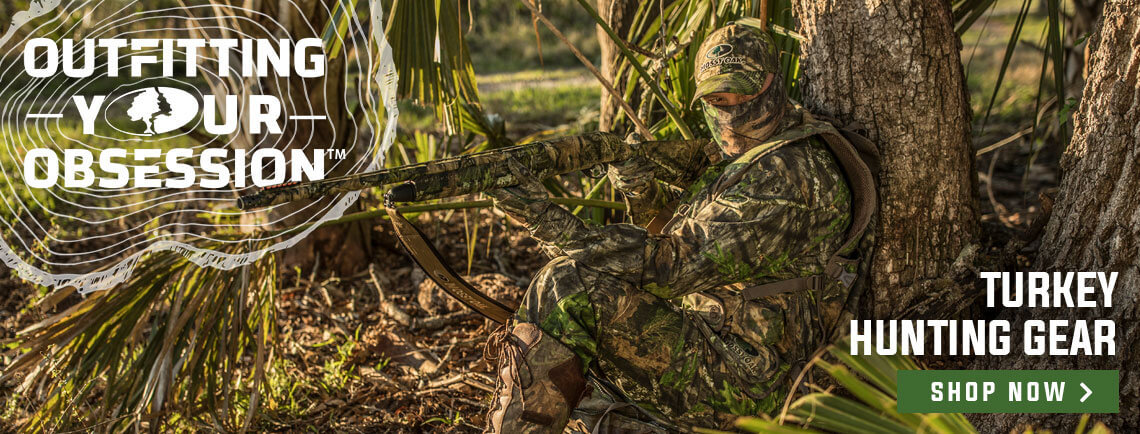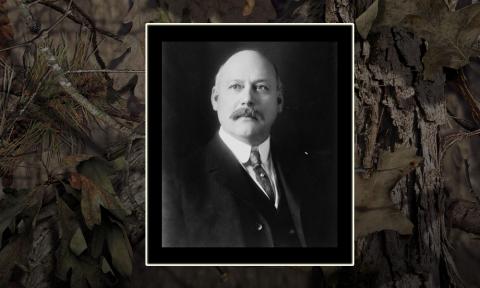Bob Humphrey
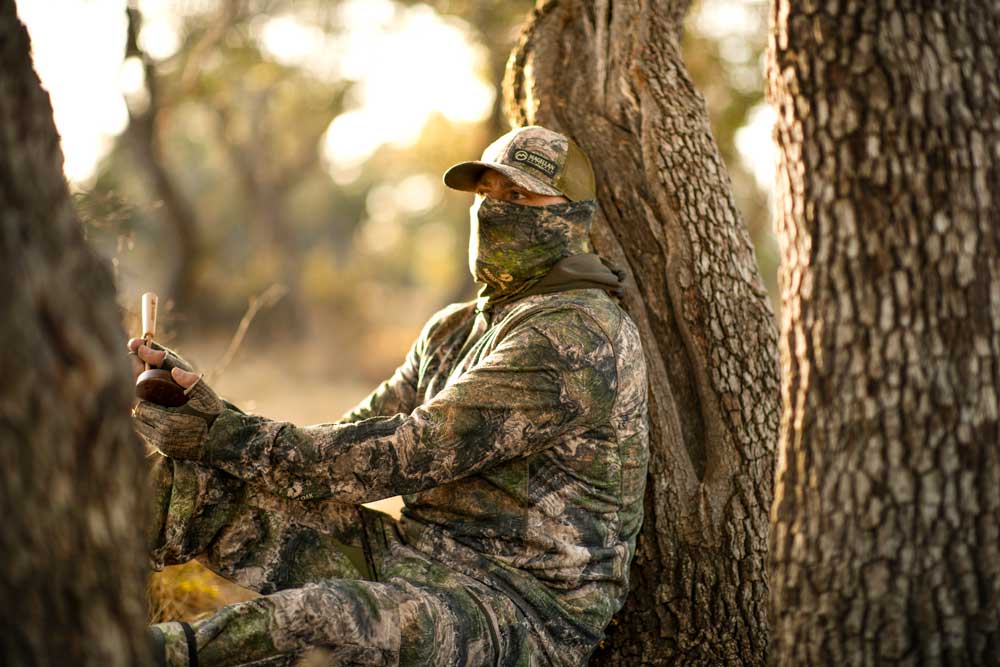
The pre-dawn symphony starts with the woodwinds and the wavering tremolo of the whip-poor-will. One by one the others join in: the rolling rondelet of the robin, the soprano solo of the song sparrow warbler, the lilt of the lark and the bubbling of the bobolink. Then the bass percussion of the barred owl elicits a reply from the brass section as turkeys trumpet from the treetops. The staccato clash of cymbals as crows caw-caw draws another reply, as does the high brass horn of a howling coyote.
That’s a rather romanticized but realistic rendition of dawn in the turkey woods with each player joining the chorus on cue. For most, the cue is incrementally increasing daylight. However, the turkey also replies to others in the orchestra, including a range of natural noises like owl hoots, crow calls, coyote yodels, and sometimes unnatural noises like car doors or horns or a rusty metal gate.
We don’t know exactly why, but it likely has something to do with them being amped up on testosterone and in an already excited state. Like a sprinter at the starting gate they’re anxiously waiting for the starting gun to go off and when it does, they explode. Imagine yourself watching a suspenseful horror movie and somebody sneaks up behind you and taps you on the shoulder; it’s a bit like that. So let’s take a look at some of the triggers.
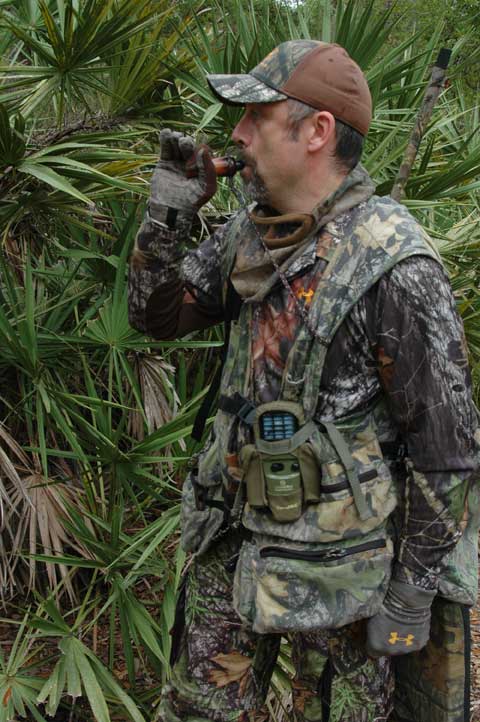
3 PRACTICES FOR USING A LOCATOR CALL
Perhaps the most famous and familiar is the barred owl’s who-cooks-for-you, who-cooks-for-you-aaaall call. Like turkeys, owls call to attract a mate, defend a territory and to let other owls know their location. They call mostly after sunset and before sunrise but may call any time of day, particularly when there’s heavy overcast. Similarly, their call is most effective at eliciting a shock gobble around twilight, but might work anytime. And if you can’t quite master the full cadence, sometimes a simple whoooo is equally effective.
Their cousin, the great-horned owl, gets less recognition by both hunter and hunted. Perhaps that’s because their cadence and deeper tone are harder to mimic. That deep tone might also be the reason turkeys are less responsive, though we don’t know why that is.
The crow caw is another common locator call. This might seem a bit counterintuitive because crows call often and throughout the day, and if turkeys gobbled every time they did, they’d probably get laryngitis. Still, the sharp, high-pitched call does sometimes get a reaction, perhaps partly because it sounds a bit like a hen turkey call, a lot like it from a distance. A helpful hint for hunters: a loud cacophony of caws is more likely to produce a shock gobble than a few modest caw-caws.
Those two will usually get the job done, but it doesn’t hurt to have a few more instruments in your orchestra, and there are several reasons for this. Even with the turkey calls we use to attract a tom, gobblers can be fickle, and may respond differently to different calls on different days. They may ignore a box but reply to a slate. They might prefer a raspy diaphragm to a pure one. On a different day or with a different bird, the opposite might be true.
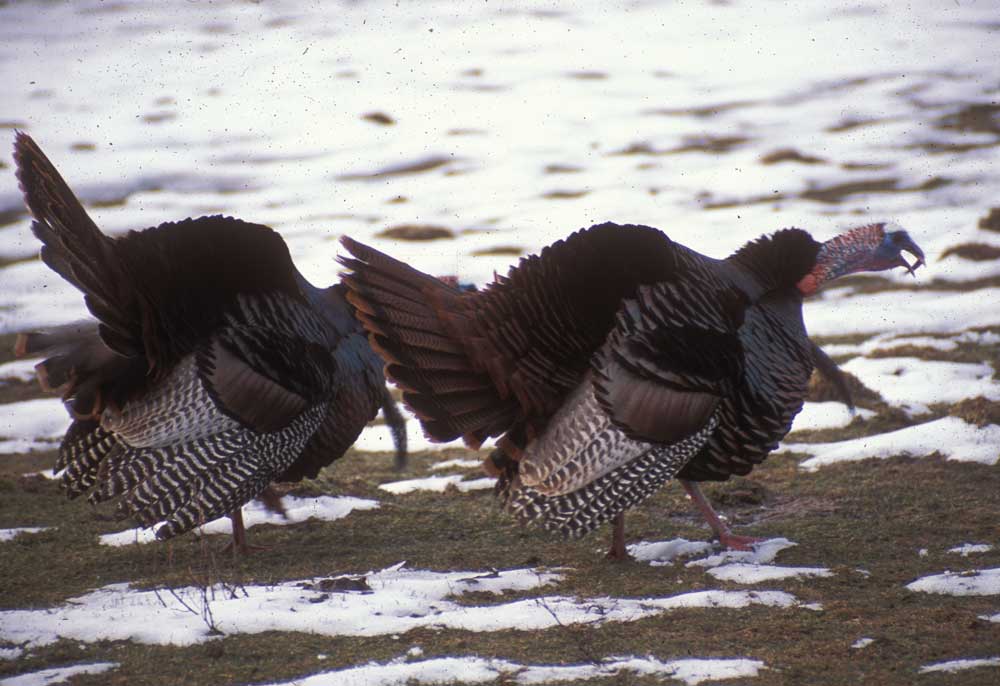
TURKEY CALLING TIPS FOR BEGINNERS
I know some will disagree with me but I also believe turkeys get call shy. Perhaps a better term is “conditioned.” You’re out riding the roads at dusk and you pull over, give your very best barred owl rendition and the bird responds. You mark that on your map and move on. Then along comes another hunter who does the same and after several attempts, gets a reply. By the thrid or fourth hunter, the gobbler has had enough. That owl call is no longer a surprise.
However, they might get a reaction to the high-pitched yip-yip-yahooo of coyote call. Like the barred owl, this one works best around twilight, when it’s most often heard in the wild, but cold work throughout the day. In addition to simply being a loud noise, it also represents danger to a turkey, which might make them more inclined to shock gobble. Woodpecker and hawk calls might also get a reaction for the reasons cited above; and again, louder, higher-pitched calls are usually more effective.
Some less experienced hunters might be thinking, “Sure, all those things might work to make a turkey gobble, but so will a turkey call.” That’s true, but the object of shock gobbling is to get a tom to give away his position without attracting him to yours. He may be a long way off, or you may not be in a good place to set up an ambush. Wait until you’re ready before talking turkey. And remember, all these calls work sometimes, but not all the time. Just because the turkeys don’t respond, it doesn’t mean they’re not there.

